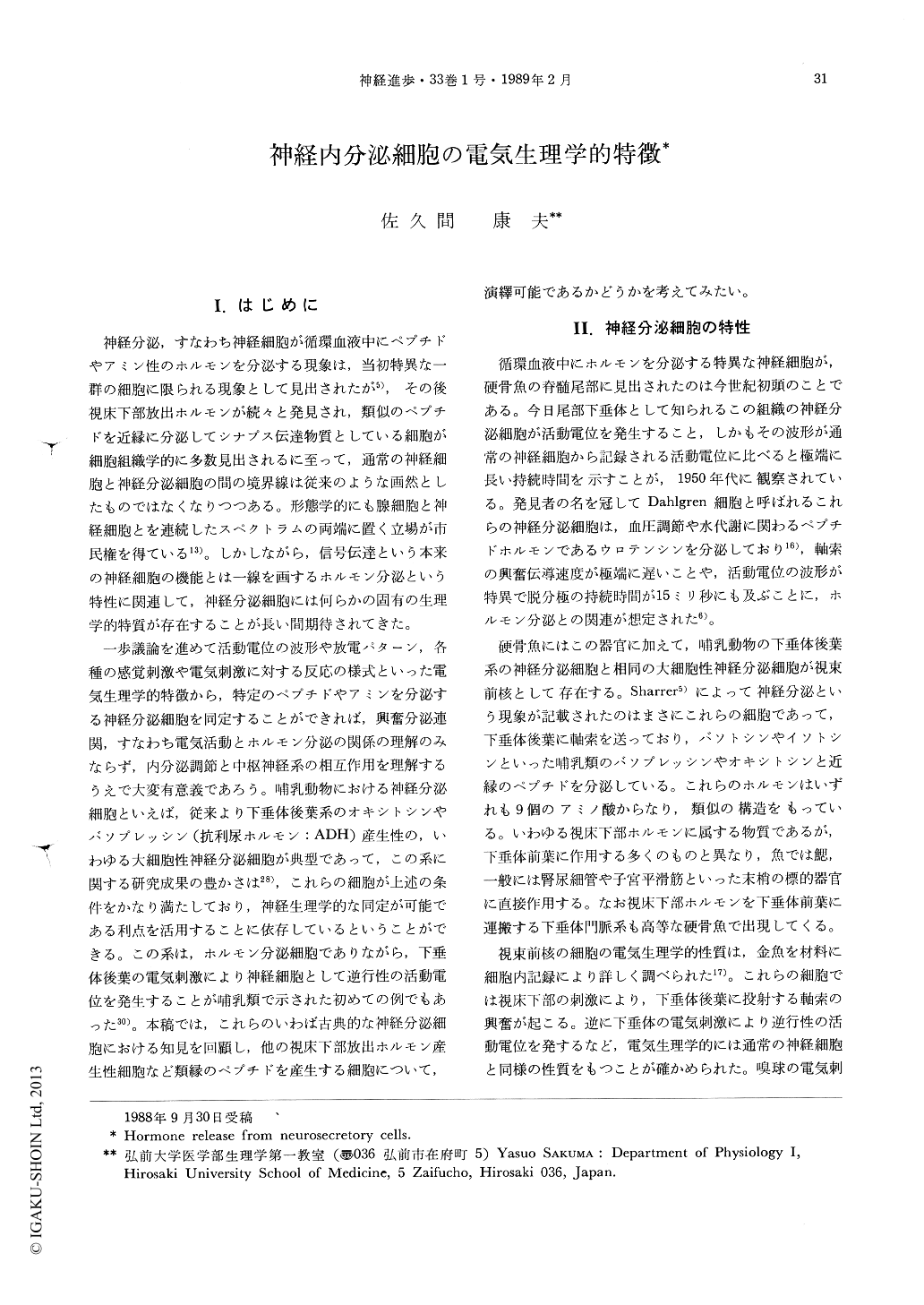Japanese
English
- 有料閲覧
- Abstract 文献概要
- 1ページ目 Look Inside
I.はじめに
神経分泌,すなわち神経細胞が循環血液中にペプチドやアミン性のホルモンを分泌する現象は,当初特異な一群の細胞に限られる現象として見出されたが5),その後視床下部放出ホルモンが続々と発見され,類似のペプチドを近縁に分泌してシナプス伝達物質としている細胞が細胞組織学的に多数見出されるに至って,通常の神経細胞と神経分泌細胞の間の境界線は従来のような画然としたものではなくなりつつある。形態学的にも腺細胞と神経細胞とを連続したスペクトラムの両端に置く立場が市民権を得ている13)。しかしながら,信号伝達という本来の神経細胞の機能とは一線を画するホルモン分泌という特性に関連して,神経分泌細胞には何らかの固有の生理学的特質が存在することが長い間期待されてきた。
一歩議論を進めて活動電位の波形や放電パターン,各種の感覚刺激や電気刺激に対する反応の様式といった電気生理学的特徴から,特定のペプチドやアミンを分泌する神経分泌細胞を同定することができれば,興奮分泌連関,すなわち電気活動とホルモン分泌の関係の理解のみならず,内分泌調節と中枢神経系の相互作用を理解するうえで大変有意義であろう。
Excitable tissues are characterized by transmembrane ionic movements as they accomplish physio-logical functions, i.e. transmission in the nerve or contraction in the muscle. Recent studies associated similar types of electrical changes in the endocrine cells when they secrete peptide hormones. As in the case for neurotransmitters, peptides and biologic amines are released from the endocrine cells by exocytosis. The stimulus-secretion coupling concept, proposed by Douglas, involves the opening of voltage-dependent calcium channels. The first demonstration of calcium potentials in endocrine cells was accomplished by Kidokoro in a prolactin-secreting clonal pituitary cell line. Other endocrine cells, which include pancreatic β cells, are also known to generate action potentials along with hormone release. Two groups of mammalian hypothalamic neurons, which are classified as magnocellular and parvocellular neurosecretory cells, also secrete peptides into the circulation as neurohypophyseal or releasing hormones. Calcium potentials have been recorded from the magnocellular neurosecretory cells as they release neurohypophyseal hormones. However, little is known on precise ionic mechanisms which operate in the mammalian brain to control secretion of these hormones. Recent introduction of patch clamp method, which enables the recordings of ionic current through a single membrane channel, may be of help in elucidating electrophysiological phenomena associated with neurosecretory activity in the mammalian brain.

Copyright © 1989, Igaku-Shoin Ltd. All rights reserved.


